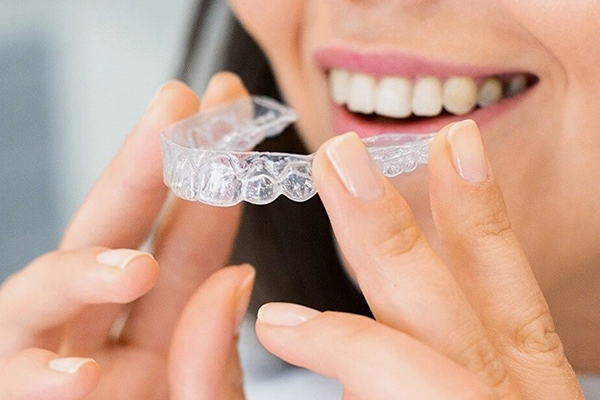
If you’re interested in getting a perfect smile without dealing with a mouthful of braces for years, clear aligners are an ideal solution—nearly invisible, comfortable, and able to straighten your teeth over time. But you may still have questions about what clear aligners can and can’t do to fix your teeth.
Before deciding, it’s important to understand the specific dental problems that can be effectively corrected using clear aligners. While clear aligners have come a long way and can successfully fix many of the most common issues, it’s crucial to understand how to use them to get the best results for your needs.
It’s important to consult with orthodontic specialists to get the best results with clear aligners. We will evaluate your dental condition and determine the best clear aligners to suit your needs. We will also draw up a personalized treatment plan for you, monitor your progress, and make any necessary adjustments to achieve the desired results.
How Do Clear Aligners Work?
Clear aligners offer an effective alternative to traditional braces for teeth straightening. Wearing aligners for 20-22 hours daily is crucial. Consistency in removing them only for eating or oral hygiene is vital to avoid elongating the treatment period.
At Aligner Experts, we offer the finest clear aligners, and the process is simple with these easy steps.
- Initial Consultation
An initial consultation and clinical assessment will determine the suitability of the aligner based on the correction required.
- Digital Impressions
Digital impressions are a modern technology that uses special scanners to take 3D pictures of your teeth and gums, making the process faster and more comfortable while reducing patient stress.

- Personalized Treatment Plan
Our orthodontic specialists design personalized treatment plans to meet each patient’s unique needs, and our doctors closely monitor the entire process from start to finish.
- Track Your Progress
Our Dental Monitoring App, Cassee, allows you to send photos of your teeth, track your progress, and communicate with our team members from the comfort of your home.
Orthodontic Issues Fixed by Clear Aligners
If you’re struggling with orthodontic problems such as underbite, overbite, open bite, gaps, or crowded teeth that are affecting your confidence, clear aligners offer a promising solution. These aligners can effectively address and correct these problems, giving you the opportunity to improve your smile and overall dental health.
- Crooked Teeth: Can aligners fix crooked teeth? Absolutely! Clear aligners are an excellent solution for straightening misaligned teeth. Unlike traditional braces, which have noticeable metal brackets and wires, clear aligners offer a discreet and virtually invisible way to have a straighter smile.
- Underbite: An underbite occurs when the lower teeth extend beyond the upper teeth. By using a series of custom-made aligners, your underbite can be corrected, providing you with an improved speech and balanced smile.
- Overbite: Can aligners fix overbite? Overbite results when the upper teeth extend too far forward and can also be corrected with clear aligners. Invisible aligners fix an overbite by gently guiding the teeth into the right position, gradually reducing the overbite and improving your smile’s aesthetics and functionality.

- Open Bite: An open bite is characterized by a gap between the upper and lower teeth when the mouth is closed. Clear aligners fix an open bite by closing this gap and bringing the upper and lower teeth into proper alignment.
- Crossbite: A crossbite occurs when the upper teeth sit inside the lower teeth when the mouth is closed. If left unaddressed, this misalignment can lead to gum issues. Aligners can fix a crossbite by gently shifting the teeth into their proper positions.
- Spacing in Teeth: Clear aligners can effectively close gaps between teeth by gently moving them closer together. Whether you have gaps due to missing teeth or naturally occurring spacing issues, aligners can discreetly and effectively close those gaps, creating a more aesthetically pleasing smile.
- Crowded Teeth: If your teeth are overcrowded and overlapping, they may lead to tooth decay, gum disease, and difficulty in cleaning. The aligners can create the necessary space within your mouth by gently shifting the teeth into their proper positions.
Orthodontic Problems That Aligners Can’t Fix
While clear aligners have revolutionized orthodontic treatment with their discreet and comfortable nature, it’s important to note that they may not be able to solve all orthodontic problems on their own. However, we do have solutions for a wide range of cases.
1. Shape of the Teeth
The shape of the teeth plays a role in the aligners’ grip and their ability to move teeth effectively. Short, round, peg-shaped, or overly pointed teeth may hinder the aligners’ secure grip, potentially affecting their ability to achieve the desired tooth movements. In such cases, alternative treatments may be considered.
2. Position of the Teeth
When teeth are overcrowded, they can shift into alternative positions, making it challenging for clear aligners to achieve the desired alignment. If the rotation of teeth, particularly molars or canines exceeds 20 degrees, clear aligners may not be able to move them in the right direction
3. Large Spaces Between Teeth
Clear aligners are generally effective in closing small to moderate gaps between teeth, up to 6mm per arch (top or bottom). However, larger gaps may require alternative treatment methods.
4. Intrusion and Extrusion
Orthodontic treatment can involve moving teeth vertically and raising or lowering their position in the jawbone. This is an essential aspect of achieving a harmonious smile, where the height of all your teeth is the same.

5. Midline Shift
For patients with front teeth that do not align with the midline of their smile, clear aligners can provide correction by up to 2mm to the right or left per arch. This can help achieve a more symmetrical smile. However, if the misalignment exceeds this range, orthodontists may recommend traditional braces as the more suitable treatment option.
6. Existing Dental Work
Certain dental work, such as dental bridges, porcelain veneers, or crowns, can pose challenges when it comes to using clear aligners. Clear aligner attachments, which help facilitate tooth movement, may not bond securely to surfaces that have dental restorations.
Conclusion
While aligners are great for minor to moderate orthodontic issues, more severe cases typically still require traditional braces. The good news is that clear aligners have come a long way and continue to expand the range of issues they can effectively treat.
Aligner Experts is a reputable clear aligner provider specializing in delivering customized solutions to help you achieve your desired smile. We can assess your unique needs and provide expert guidance on whether clear aligners are the right choice for you. Get in touch today!


